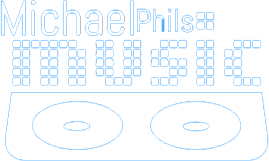The black and white things you might call buttons on your piano are called “keys”. On some keyboards, they might be 61, 76 or 88; but they are just a re-occurrence of twelve particular keys.
See the illustration below:
Lool; that’s from my old piano that I bought from Alaba international market oo.
So We are concentrating on 5 black keys and 7 white keys. In total they become 12. So the notes I told you about in lesson one:
C D E F G A B C
Are the white keys. I remember I told you that those notes above have some friends that they are hiding in their rooms, those friends are the black keys.
What are the names of those black keys? Together they are called “Enharmonics”. Because they have the same sound but different names.
What are their individual names?
Before I tell you, let me first introduce you to sharps(#) and Flats(b).
For now, let me define a sharp as a note forward
And a flat as a note backwards.
Look at this picture below again:
There are five black keys;
the first one is called C# because we are moving a note forward from C,
It can also be called Db because we are moving a note backward from D.
The second black key is called D# because we are moving a note forward from D,
It can also be called Eb because we are moving a note backward from E.
The third black key is called F# because we are moving a note forward from F,
It can also be called called Gb because we are moving a note backward from G
The fourth black key is called G# because we are moving a note forward from G,
It can also be called Ab because we are moving a note backward from A
The fifth black key is called A# because we are moving a note forward from ,
It can also be called Bb because we are moving a note backward from B.
Tip: sharp goes forward by one note, flat goes backward by one note too.
I hope you now understand the way the black keys are named.
Now that we know the names of all the keys, lets move on. Please don’t forget these names because you would need them every single time you would be playing.
You might be asked, on what key are you playing on? You should be able to tell them whether it is C#(which is my favorite key) or any other key.
Next – Lesson 4: Singing and playing on different keys
Lesson 1: Introduction to the Piano
Lesson 2: Brief Introduction to music
Lesson 3: Keys of the Piano
Lesson 4: Singing and playing on different keys
Lesson 5: Intervals
Lesson 6: Chromatic Scale
Lesson 7: Circle of Fifths and Fourths
Lesson 8: Key Signature
Lesson 10: Fingering for the chromatic scale
Lesson 11: Introduction to Chords
Lesson 13: Chord inversions




